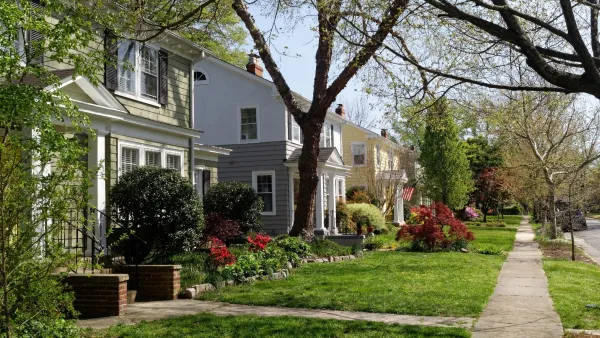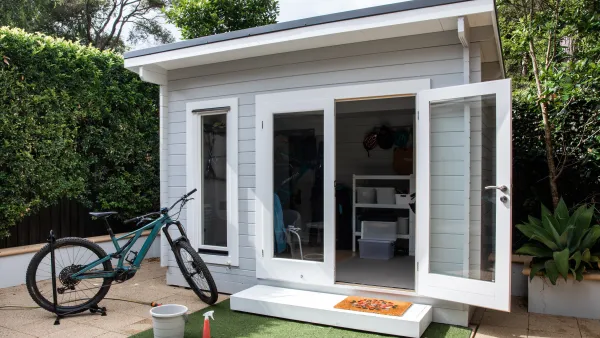The city expanded the areas where homeowners can build ADUs in an effort to boost housing supply and affordable rental units.

Two bills passed by the Jacksonville City Council will legalize accessory dwelling units (ADUs) in most Jacksonville neighborhoods, except where prohibited by homeowners associations. As Mike Mendenhall reports in the Jacksonville Daily Record, council member Rory Diamond, who sponsored the bills, says “the new structures would increase property values where they’re built, particularly in Jacksonville’s urban neighborhoods where advocates say the need is greatest.”
Restrictions in the bills include an owner-occupancy requirement and a rule stating that the ADU must adhere to a similar aesthetic style as the main home. The addition’s footprint must be limited to 25 percent of the house or 750 square feet, and the structure cannot be taller than the house.
Opponents say the proliferation of ADUs could “ruin the ‘ambiance’” of the city’s traditional single-family neighborhoods, a common concern among ADU detractors. Yet ADUs, once known as carriage houses, are common in some of Jacksonville’s most historic neighborhoods. Accessory units only fell out of favor more recently, when single-family zoning began to dominate America’s residential neighborhoods.
Other supporters of the bills say many Jacksonville residents were already building ADUs, and that legalizing the process would make their construction safer while adding sorely needed housing stock.
FULL STORY: Council approves plan to expand accessory dwelling units in Jacksonville

National Parks Layoffs Will Cause Communities to Lose Billions
Thousands of essential park workers were laid off this week, just before the busy spring break season.

Retro-silient?: America’s First “Eco-burb,” The Woodlands Turns 50
A master-planned community north of Houston offers lessons on green infrastructure and resilient design, but falls short of its founder’s lofty affordability and walkability goals.

Delivering for America Plan Will Downgrade Mail Service in at Least 49.5 Percent of Zip Codes
Republican and Democrat lawmakers criticize the plan for its disproportionate negative impact on rural communities.

Test News Post 1
This is a summary

Test News Headline 46
Test for the image on the front page.

Balancing Bombs and Butterflies: How the National Guard Protects a Rare Species
The National Guard at Fort Indiantown Gap uses GIS technology and land management strategies to balance military training with conservation efforts, ensuring the survival of the rare eastern regal fritillary butterfly.
Urban Design for Planners 1: Software Tools
This six-course series explores essential urban design concepts using open source software and equips planners with the tools they need to participate fully in the urban design process.
Planning for Universal Design
Learn the tools for implementing Universal Design in planning regulations.
EMC Planning Group, Inc.
Planetizen
Planetizen
Mpact (formerly Rail~Volution)
Great Falls Development Authority, Inc.
HUDs Office of Policy Development and Research
NYU Wagner Graduate School of Public Service





























